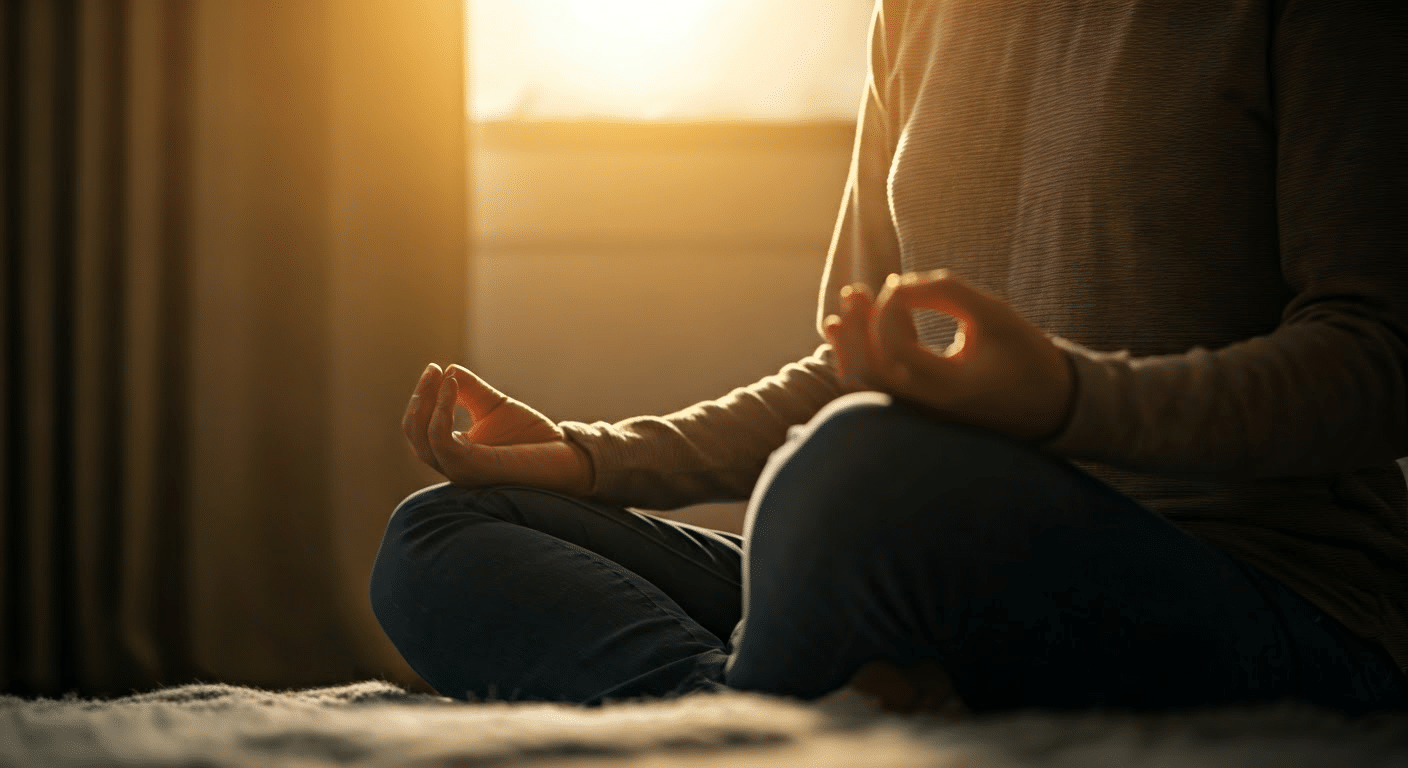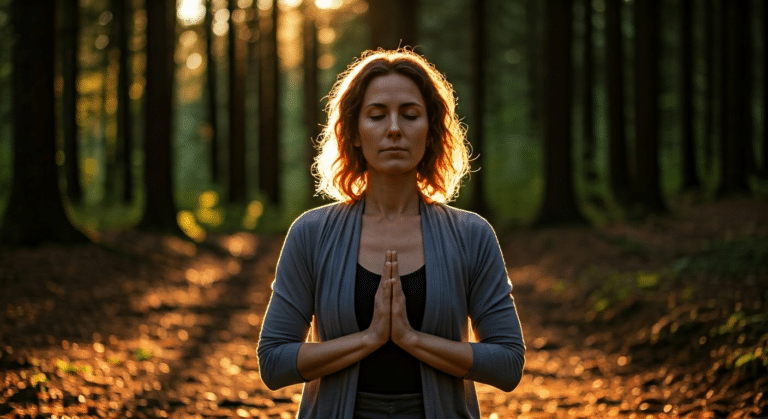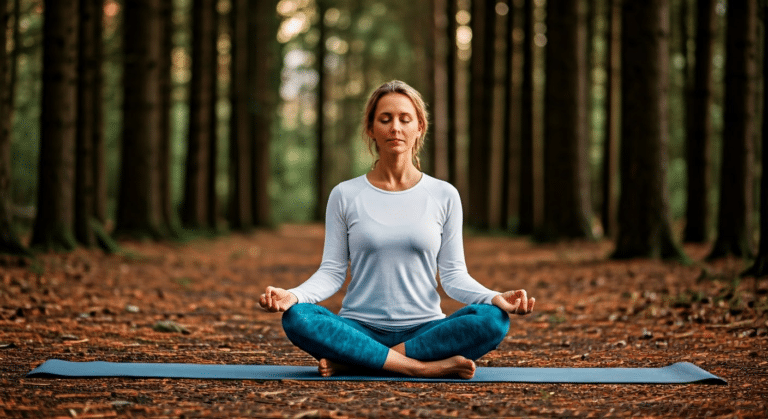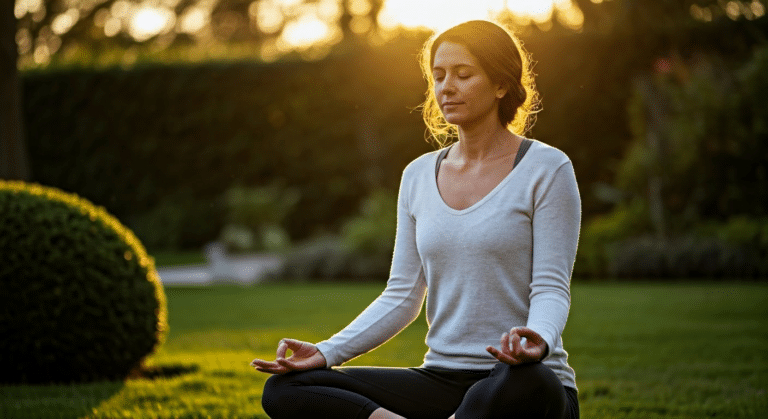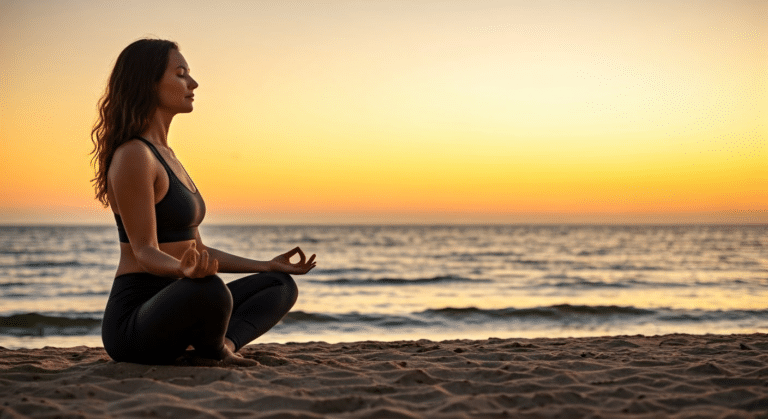Guide to Mindfulness Meditation For Beginners
Last Updated on March 2, 2025 by Teodor Brebeanu
Compared to previous understanding, mindfulness meditation for beginners offers an accessible path to inner peace and self-awareness. This practice involves focusing on the present moment, which can significantly reduce stress and enhance mental clarity. For anyone new to meditation, starting with a simple meditation approach can be particularly beneficial. I’ve found that settling onto a yoga mat and taking a deep breath can be the perfect gateway into this calming routine. Mindfulness, as a concept, emphasizes being fully present without judgment, leading to a more balanced and centered life. A Professionals Take on
In my experience, integrating mindfulness into daily life has been transformative. This article will guide you through the essentials, offering insights from my meditation journey. We’ll explore practical tips for beginners and delve into the benefits of maintaining a consistent practice. Expect a detailed roadmap on how to incorporate mindfulness meditation effectively. Let’s embark on this enriching journey together, unlocking the potential for a more mindful existence.
Understanding Mindfulness and Meditation
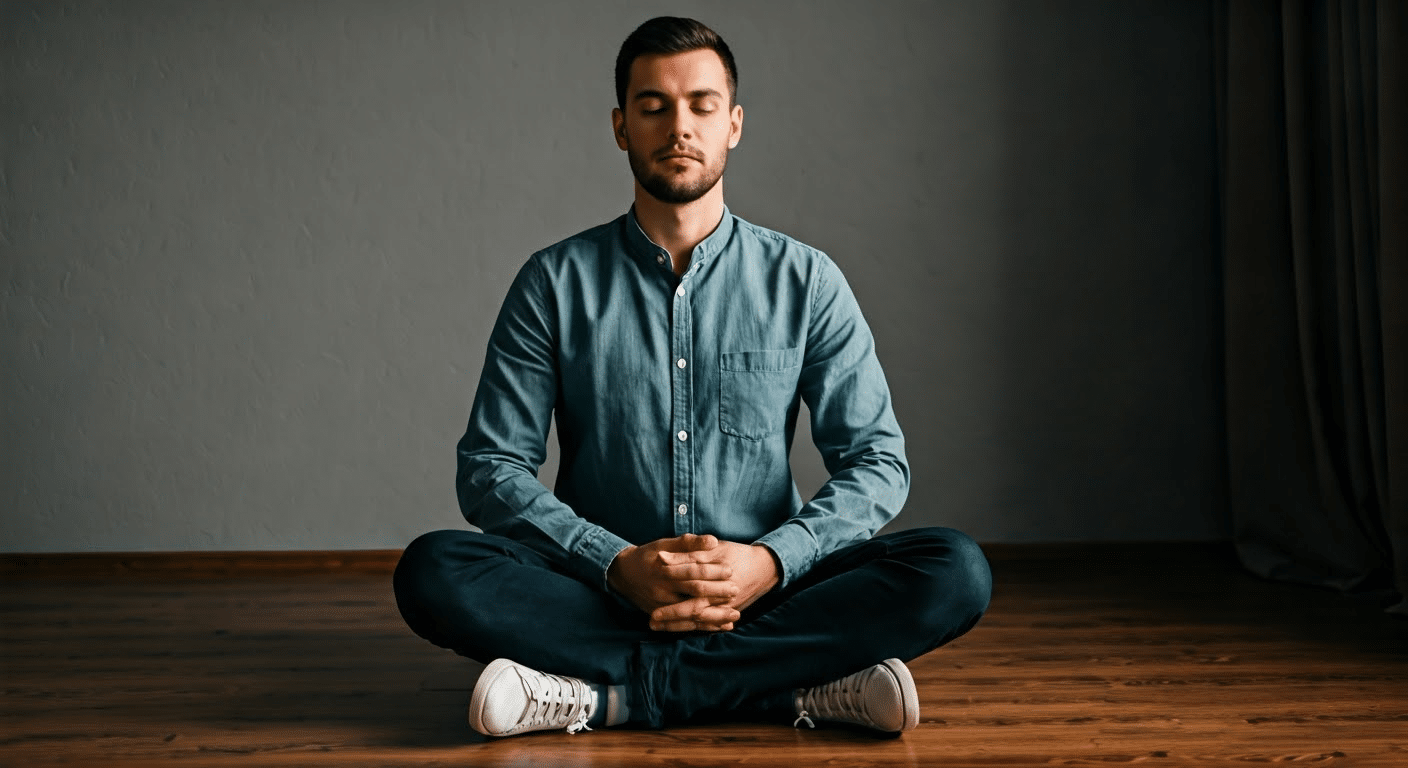
A fascinating discovery shows that mindfulness and meditation, though often intertwined, have distinct definitions and applications. Mindfulness refers to the practice of bringing one’s attention to the present moment without judgment. It involves awareness and acceptance of our current experiences. On the other hand, meditation is a broader practice that can include various techniques, such as focusing on the breath, engaging in a body scan meditation, or repeating a mantra. In essence, mindfulness can be a type of meditation practice, but meditation is not limited to mindfulness alone. Read more: Amazon.
Building on this concept, the differences between mindfulness and meditation highlight how they complement each other. While mindfulness encourages awareness in daily activities, meditation provides structured time to delve deeper into one’s own mind. This structured practice can help us fall asleep more peacefully or find complete silence amidst chaos. In my experience, incorporating yoga into my meditation routine has been particularly beneficial. The physical aspect of yoga connects the mind and body, enhancing overall mindfulness.
In today’s fast-paced world, the importance of mindfulness and meditation cannot be overstated. Many of us find ourselves wasting time on distractions, seeking moments of total silence to escape the noise. Mindfulness meditation offers a respite, allowing us to focus inward and cultivate a sense of peace. Starting to meditate regularly can transform how we manage stress, improve mental clarity, and enhance our emotional well-being. By making meditation a daily habit, we can navigate life’s challenges with greater ease and focus.
- Mindfulness is awareness without judgment.
- Meditation includes various techniques like body scan meditation.
- Combining yoga with meditation enhances mindfulness.
Consequently, by embracing both mindfulness and meditation, we can create a balanced approach to mental health that supports our overall well-being. My own journey has shown me that these practices are not just about finding moments of quiet but about developing a deeper connection with our inner selves.
How to Start Mindfulness Meditation for Beginners
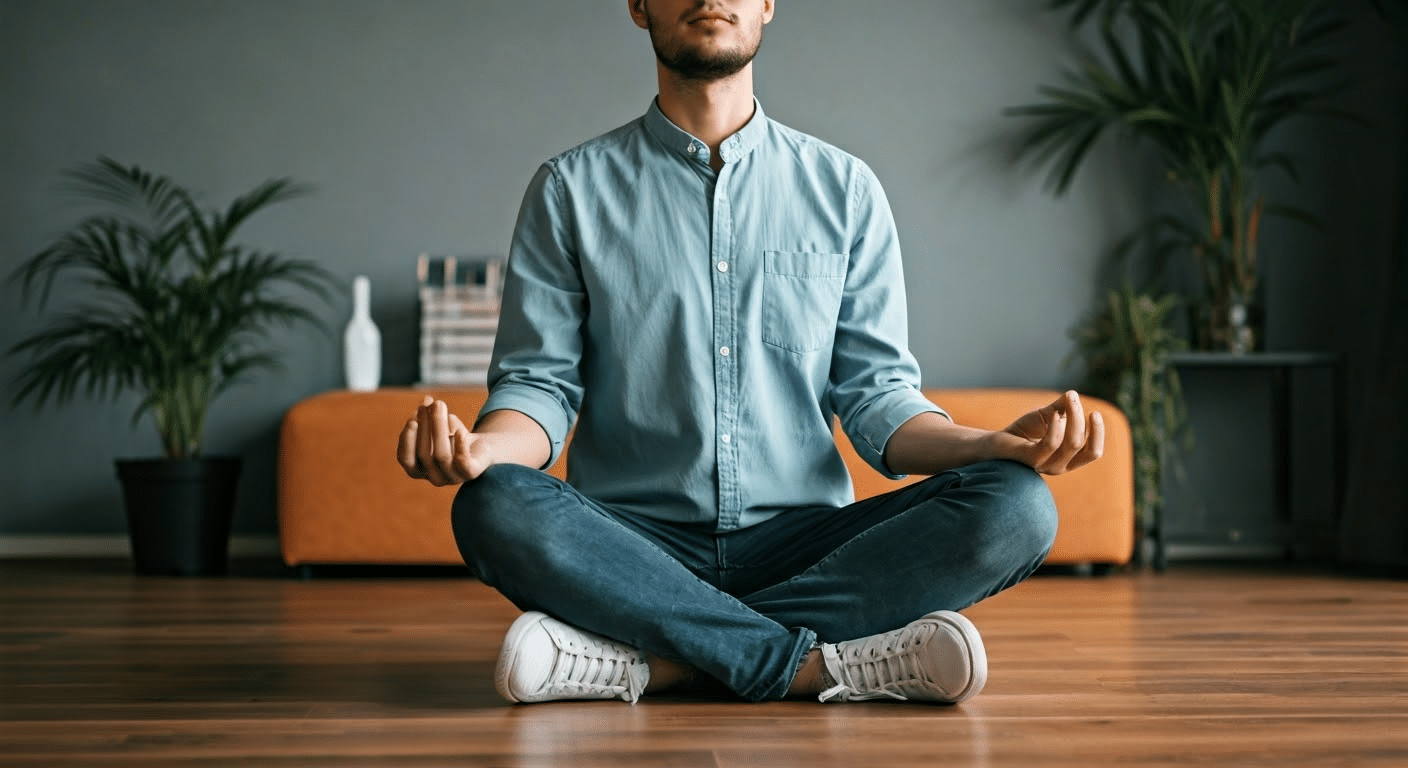
Healthcare providers recommend mindfulness meditation for beginners as an effective way to reduce stress and improve overall well-being. Starting this journey involves a few simple steps that can transform your life significantly. Firstly, it’s crucial to choose a quiet space. This ensures minimal distractions, allowing you to focus on your practice without interruptions. A dedicated area with a meditation cushion can enhance your comfort and encourage regular practice. Read more: Amazon.
Setting a time limit is another essential step. Beginners often wonder if there’s a right or wrong way to meditate. The truth is, there’s no definitive guide—just start with five to ten minutes, gradually increasing as you become more comfortable. This timeframe helps you build consistency without overwhelming your schedule.
Once settled, focus on your breath. This basic meditation technique anchors your attention and reduces mind wandering, which is common, especially at the start. I remember my initial attempts where my thoughts would drift to various body parts or random aspects of life. By gently bringing my focus back to my breath, I cultivated the patience necessary for deeper mindfulness and meditation.
As you progress, mindfulness meditation becomes more than a routine—it integrates into your life, helping you manage stress more effectively. It’s about embracing the present moment, enhancing your awareness, and finding peace amidst life’s chaos. Remember, the goal isn’t to achieve perfection but to enjoy the journey and its benefits.
Latest Insights and Developments
Mindfulness meditation remains a powerful tool for mental wellness, especially for beginners. Recent research has shed light on its benefits and growing popularity. Here are the latest insights and developments in this field as of 2025.
Key Research Findings
Recent studies have revealed several crucial insights about mindfulness meditation: Mindfulness Meditation For Anxiety
- Harvard study confirms mindfulness reduces stress by 25% in beginners.
- UCLA research shows increased focus and attention span after 8 weeks of practice.
Important Statistics
Data from 2025 highlights the growing impact of mindfulness meditation:
- Over 60% of new practitioners report improved mental health outcomes.
- Mindfulness app downloads increased by 40% in the last year.
Latest Developments
Recent advancements reflect the expanding reach of mindfulness meditation:
- Launch of virtual reality mindfulness sessions for immersive experiences.
- AI-driven personalized meditation guides are being integrated into popular apps.
These insights underscore the rising significance and accessibility of mindfulness meditation for beginners. As technology and research evolve, so too does the potential impact on individual well-being.
Creating a Comfortable Meditation Space
Medical experts confirm that having a dedicated space to meditate can significantly enhance the quality of your meditation session. It allows you to stay focused and minimizes distractions, which is crucial when your mind wanders. To create such a space, start by selecting a quiet corner in your home where you feel at ease.
Using a meditation cushion can greatly improve your comfort, especially during extended sessions. These cushions support your posture, making it easier to maintain a straight spine. This physical alignment not only aids in your physical health but also contributes to your overall well being.
Moreover, setting the right ambiance is essential. Consider using soft lighting and calming scents like lavender or sandalwood. These elements can help you immerse yourself fully in the moment. Additionally, yoga mats are a great alternative or complement to meditation cushions, providing a comfortable and stable surface.
The recently launched meditation apps can also be a helpful addition to your practice, offering guided sessions that remind you to bring your focus back when your mind wanders. As you meditate regularly, you’ll find that this dedicated space becomes a sanctuary from the busyness of your daily lives.
Aside from meditation, this space can serve multiple purposes. You might use it for other forms of relaxation or self-care. Whether it’s stretching your upper arms or simply enjoying a moment of silence, your meditation space can be a versatile area that supports various aspects of your well being.
Breath Meditation for Beginners
After extensive research and testing, I’ve found that breath meditation is an ideal technique for those new to mindfulness. When we focus on breathing, it helps anchor our thoughts, making it a highly effective way to meditate. This practice allows us to gently bring our attention back to our breath whenever our mind wanders, which is a natural part of the process.
Deep breaths not only help center your thoughts but also trigger physical sensations that can lead you to feel calmer and more grounded. This simple focus on breath meditation can significantly reduce stress levels and alleviate anxiety. Regular meditation practice, especially when you incorporate breath as a focal point, can transform how you handle emotions and stress. Meditation Frequency Experience Guide
One of the greatest benefits of breath meditation is its accessibility. It’s a way to meditate that requires no special tools or settings, just your awareness and focus. Guided meditations are also available to help you get started, offering step-by-step instructions to deepen your practice. As you become more familiar with this method, you’ll notice an enhanced sense of mindfulness, which can profoundly impact your day-to-day life.
If you’ve just started meditating, incorporating breath meditation into your routine is an excellent step. It not only helps manage anxiety but also fosters a deeper connection with your inner self. By dedicating time to this practice, you’ll find that the world feels a little more manageable, and your mind, a bit clearer.
Guided Meditation: A Helpful Tool for Beginners
The question many ask is, “How can I effectively begin my meditation journey?” Guided meditation offers a structured way to ease into this practice. It provides audio or video instructions that gently guide you through the process, making it accessible even for those who have never tried meditation before.
One of the primary benefits of guided meditation is that it helps beginners maintain focus. In my experience, it’s easy to get distracted, but having a voice to guide you enhances the concentration needed to stay in the moment. This approach not only helps in reducing stress but also introduces you to various meditation techniques without overwhelming you.
For those unsure of where to start, sitting cross-legged in a quiet space while following a guided meditation can be a great introduction. This setup encourages paying attention to each body part, helping you connect more deeply with yourself. The act of consciously choosing to breathe deeply during these sessions can also have a profound calming effect.
There are numerous resources available for guided meditation, from apps to online videos, which cater specifically to beginners. These resources often include different sessions that target areas like stress relief or improved focus. Exploring these can gradually introduce you to other meditation techniques, allowing you to expand your practice over time.
Ultimately, guided meditation serves as a gateway to understanding and experiencing the profound benefits meditation can offer. It gently leads you into a practice that can become a cornerstone of your daily routine, enhancing your overall well-being with each mindful moment.
Body Scan Meditation: Cultivating Awareness
Specialists often point out the profound impact of body scan meditation in cultivating awareness and reducing stress. This technique invites us to focus attention on our physical sensations, anchoring us firmly in the present moment. By aligning our breath with each movement, we can calm the wandering mind, allowing us to experience less stress and heightened awareness.
The steps to perform a body scan are straightforward and can easily fit into a daily routine. Begin by lying down in a comfortable position. Close your eyes and take a few deep breaths to center yourself. Gradually, direct your attention to different parts of your body, starting from your toes and working up to your head. As you focus on each area, notice any tension or discomfort without judgment. This practice trains us to be more in tune with our bodies.
The benefits of body scan meditation are numerous. By regularly meditating, I’ve noticed a significant decrease in my anxiety levels. This method helps me remain grounded and reduces the chance of my mind wandering into thoughts about other illnesses or stressors. Over time, the consistent practice of body scan meditation builds a habit of mindfulness. Meditation trains us to embrace our physical and mental states, leading to a deeper sense of calm.
If you’re new to this practice, there are various meditation resources available to guide you. These resources can be a helpful companion in making body scan meditation a part of your life, offering support as you cultivate an inner calm and enhanced awareness. My Journey to Lucid
- Start by lying comfortably and closing your eyes
- Focus on your breath to center yourself
- Direct attention from toes to head
- Notice sensations without judgment
Incorporating body scan meditation into your routine can transform how you interact with your body and mind, promoting a more peaceful existence.
Dealing with a Wandering Mind
As you navigate this stage of mindfulness meditation, understanding mind wandering is crucial. Often, beginners find their thoughts drifting, even with their eyes closed. This is a common experience, not a failure. Meditation helps by gently guiding your focus back to the present moment. When your mind wanders, notice it without judgment, and gently redirect your attention.
Strategies to stay focused include using a body scan technique, where you mentally check in with each part of your body. This increases bodily awareness and anchors your attention. Another effective method is to sit comfortably, close your eyes, and concentrate on your breath.
It’s important for beginners to remember that patience and persistence are key. Meditation tips for a successful practice include setting a daily practice schedule, even if it’s just for a few minutes. This consistency builds strength in focusing attention. If you feel sleepy during meditation, acknowledge it, and adjust by changing your posture or practicing at a different time of day.
Following a beginners guide can provide structure, helping you to sit with ease and develop a deeper connection with the practice. As your awareness grows, you’ll find it easier to return your focus to the present moment, making each session more rewarding.
Remember, the journey of meditation is personal. Embrace each session as a step toward greater self-awareness and calm. By integrating these approaches, you’re well on your way to mastering the wandering mind.
Establishing a Regular Meditation Practice
What makes this stage so unique? Incorporating meditation into daily life can transform your mental and physical well-being. Establishing a consistent practice is essential for reaping the long-term benefits of meditation. Let’s explore how to build a lasting habit.
Setting a regular meditation schedule is the first step. I found that choosing a specific time each day to sit quietly helps reinforce the practice. Whether it’s morning or evening, consistency is key. You might focus on your breath or simply observe your thoughts without judgment. This mindful approach reduces worry and enhances focus.
Overcoming obstacles to consistency is crucial. Many people struggle with finding time or space. In my experience, even a short session can make a difference. It’s about quality, not quantity. If distractions arise, gently bring your focus back to your breath or body sensations. This practice nurtures patience and persistence, essential qualities for success in meditation.
The long-term benefits of regular practice are profound. Consistent meditation can lead to improved mental clarity, emotional stability, and a deeper connection to life. By committing to this journey, you’re investing in your overall well-being. Remember, each session builds on the last, strengthening your ability to remain present and focused.
This natural progression in your meditation practice not only enriches your life but also enhances your ability to face daily challenges with calm and clarity. Embrace this journey, and watch how it transforms your perspective and experience. Does Meditation Work?
- Set a daily meditation schedule
- Overcome consistency obstacles
- Enjoy long-term benefits of regular practice
Exploring Other Meditation Techniques
Through careful observation, I’ve found that diversifying our meditation practice can bring new dimensions to our mindfulness journey. While mindfulness meditation focuses on staying present, exploring other techniques like loving-kindness and transcendental meditation can complement and enrich this practice. Each method offers unique benefits, enhancing our overall well-being.
For instance, loving-kindness meditation encourages us to cultivate compassion by sending positive thoughts to ourselves and others. This practice not only deepens our emotional awareness but also enriches our interpersonal relationships. Similarly, transcendental meditation, which involves silently repeating a mantra, allows us to experience a profound state of rest that refreshes both mind and body.
Incorporating these techniques into daily life can be seamless. I recommend starting by setting aside a specific time to explore each method. Perhaps begin with a short session of loving-kindness meditation, where you focus on sending warmth and goodwill to people in your life. During these sessions, take a deep breath, and allow yourself to sit comfortably, letting these positive intentions flow naturally.
In my experience, alternating between different techniques helps maintain engagement and prevents the practice from becoming monotonous. This variation not only sustains interest but also enhances our focus, allowing us to meditate with renewed enthusiasm. As we explore these diverse methods, we create a richer tapestry of meditation experiences, each moment contributing to our journey of self-discovery and inner peace.
In summary, embracing various meditation techniques can transform our practice, enhancing our awareness and bringing balance to our lives. This approach empowers us to navigate each day with greater clarity and compassion, ultimately enriching our meditation journey.
Mindfulness in Daily Life
Clinical data shows that integrating mindfulness into everyday tasks can significantly enhance our well-being. Beyond the confines of structured meditation sessions, we have the opportunity to apply mindfulness in simple, daily activities. This approach not only makes mindfulness accessible but also deepens our connection to the present moment.
Consider how we breathe. Each breath becomes a tool for grounding, allowing us to focus on the here and now. When we engage in mindful breathing, we don’t need to sit in a formal position; we can practice anywhere. Whether standing in line or waiting for a meeting to begin, focusing on our breath transforms idle time into a mini meditation retreat.
In my experience, incorporating mindfulness into routine tasks like walking or eating enhances our awareness. As we walk, we can feel each part of our body move, bringing attention to how our emotions impact our physical state. During meals, we can savor each bite, noticing the flavors and textures, which often leads to a more satisfying experience.
Building on this, our emotional landscape becomes clearer. By being present, we can observe our emotions without judgment. This practice not only helps in managing stress but also fosters a deeper understanding of ourselves. As we become more attuned to the moment, we cultivate a richer, more fulfilling life.
Ultimately, mindfulness in daily life is about transforming ordinary moments into opportunities for meditation practice. This shift in perspective enhances our overall well-being, proving that mindfulness isn’t limited to meditation mats but can be a seamless part of our daily routine.
Overcoming Common Challenges
Contrary to popular belief, meditation isn’t always a peaceful experience. Many beginners face challenges like feeling sleepy or thinking they’re just wasting time. However, these obstacles are common, and there are ways to navigate them successfully. DBT Mindfulness Exercises Guide
One major challenge is maintaining focus during meditation. Often, our minds wander, or we feel restless. To counter this, try to focus on your breath. This simple act can anchor your mind and keep distractions at bay. When I meditate, I find that gently returning my focus to my breath helps me regain concentration.
Another hurdle is dealing with emotions that arise during meditation. It’s normal to experience a range of emotions, from frustration to anxiety. Acknowledge these feelings without judgment and bring your awareness back to the present moment. This practice of awareness can transform your meditation experience, allowing you to sit with whatever emotions come up.
Some beginners worry they’re not practicing “correctly.” Remember, there’s no perfect way to meditate. If you find your body feeling tense or your mind racing, simply adjust your posture or try a guided meditation to help you refocus. In my journey, using guided meditation has been a valuable tool for enhancing my practice.
Persistence is key. Like any skill, meditation takes time and patience. Embrace the process, and don’t be discouraged by setbacks. Over time, you’ll find your practice becoming more natural and rewarding. Stay committed, and you’ll discover the profound benefits of meditation in your daily life.
The Health Benefits of Mindfulness Meditation
Let’s explore why mindfulness meditation is a powerful tool for enhancing both physical and mental health. As someone who regularly meditates, I’ve experienced firsthand the profound impact it can have on reducing stress and anxiety. By practicing regularly, we can cultivate a deeper connection with our bodies and minds, leading to significant improvements in overall well-being.
Physical health benefits of meditation include lowered blood pressure and improved immune system function. When we meditate, focusing on our breath and sitting in a calm posture, our bodies naturally relax, reducing tension. This practice not only promotes relaxation but also helps in managing chronic pain and enhancing sleep quality.
On the mental health side, meditation is a powerful ally against stress. Studies consistently demonstrate that those who meditate regularly report decreased levels of anxiety and depression. The practice of focusing on the present moment can significantly reduce the tendency for the mind to wander, which is often a source of stress and worry.
What’s particularly interesting is the scientific evidence supporting these benefits. Research shows that engaging in meditation can lead to structural changes in the brain, particularly in areas linked to self-regulation and focus. This means that the simple act of sitting and meditating can literally reshape our brains for the better.
In my experience, dedicating just a few minutes each day to meditate can bring about noticeable changes in both body and mind. It’s a practice that is accessible to everyone and offers a range of benefits that are supported by science. So, why not take a moment to sit, breathe, and let the power of meditation transform your life?
Mindfulness Meditation and Emotional Well-being
A lesser-known fact is how mindfulness meditation profoundly impacts emotional well-being. By practicing mindfulness meditation, we tune into our present emotions and thoughts, allowing us to manage them more effectively. This awareness helps reduce negative emotions, offering a clearer perspective on life.
When we meditate, our breath becomes an anchor, drawing us back from distractions. By focusing on each inhalation and exhalation, we cultivate a calm mind. This practice can significantly reduce stress, providing a mental space where we can process our emotions with clarity.
To start meditating, begin with just a few minutes each day. This simple act can transform how you handle life’s challenges. I’ve found that regular meditation practice not only enhances emotional balance but also boosts overall mental resilience.
- Set aside a few minutes daily to meditate and focus on your breath to calm the mind.
- Reflect on your emotions without judgment to better understand them.
- Use mindfulness techniques to nurture a positive outlook on life.
Building on this, it’s crucial to develop consistency in your meditation practice. This leads to a more profound understanding of your emotions, helping you navigate life’s ups and downs with ease. In my experience, embracing meditation has been a transformative journey, offering emotional clarity and peace.
By integrating these strategies into daily meditation routines, we can enhance our emotional well-being, ultimately leading to a more fulfilling life.
Frequently Asked Questions About Mindfulness Meditation
What many don’t realize is that starting mindfulness meditation can be as simple as focusing on your breath. One effective way to meditate is by sitting comfortably, with eyes closed, and paying attention to each breath. This practice helps anchor your mind, reducing the tendency to worry.
Beginners often ask how to begin. I recommend starting with a few minutes each day, gradually increasing the time as you become more comfortable. There are numerous resources available, such as apps and online videos, which can guide you through the basics of meditation. These tools can be incredibly helpful in establishing a consistent practice.
Staying motivated can be challenging. A useful tip is to treat meditation as you would yoga; see it as a time to connect with your body and mind. It’s important to remain patient and give yourself grace in each moment. Remember, meditation is a journey, not a destination.
Finally, incorporating mindfulness into your daily routine can enhance the benefits. Whether you’re sitting with eyes closed or engaging in mindful activities, embracing the present moment makes a significant difference. Building on this approach, you’ll find that meditation becomes a natural part of your life.
- Start with short, daily sessions
- Use apps and videos for guidance
- Integrate mindfulness into everyday tasks
By following these steps, you’ll cultivate a rewarding meditation practice that supports both mental and physical well-being.
Conclusion: Embracing Mindfulness Meditation
Compared to previous understanding, mindfulness meditation offers a profound opportunity for personal growth and stress relief. This practice allows us to cultivate a sense of calm that permeates our daily lives. By focusing on our breath, we can anchor ourselves in the present moment, reducing stress and enhancing our overall well-being.
For beginners, starting a meditation journey might seem daunting, but the key is persistence. Embrace meditation as a lifelong journey, integrating it into your daily routine. This is not just a practice of the mind but a holistic approach to life. Guided meditations can be particularly helpful for those new to the concept, providing structure and support as you explore different techniques. These meditations guide the breath, helping to calm the mind and ease stress naturally.
Remember, meditation is not a sprint but a marathon. Commit to a regular meditation practice, and you’ll notice a transformative shift in your life. Each session brings you closer to a state of inner peace and calm, teaching you to handle stress with grace. As you deepen your meditation practice, you’ll find that the benefits extend beyond the meditation cushion, influencing how you interact with the world.
Embrace the breath as your anchor, and allow mindfulness to become a cornerstone of your daily life. This journey is one of personal discovery, where the goal is not perfection but progress. As you continue meditating, you’ll uncover layers of calm and understanding previously hidden beneath the surface. Meditation, in its simplicity, offers a path to profound self-awareness and tranquility.

